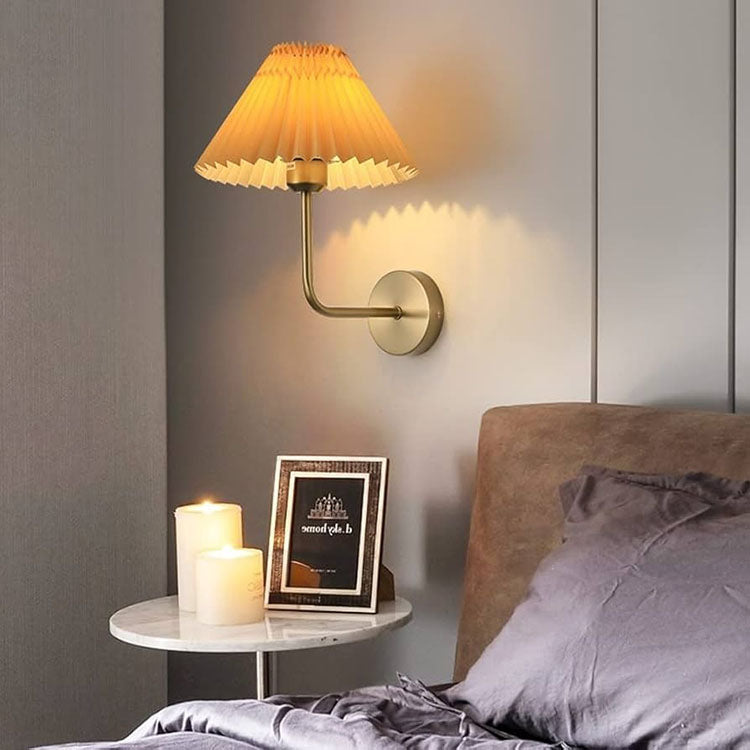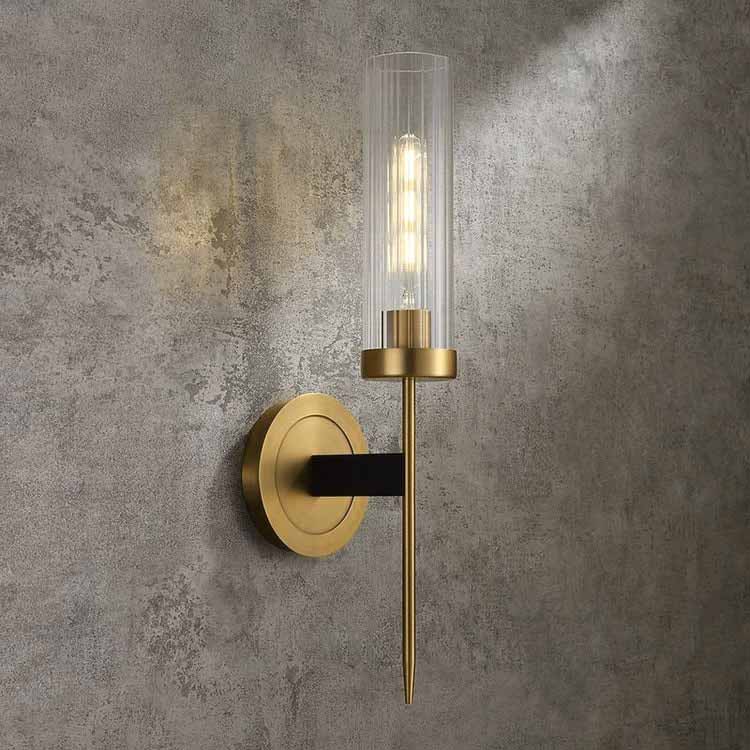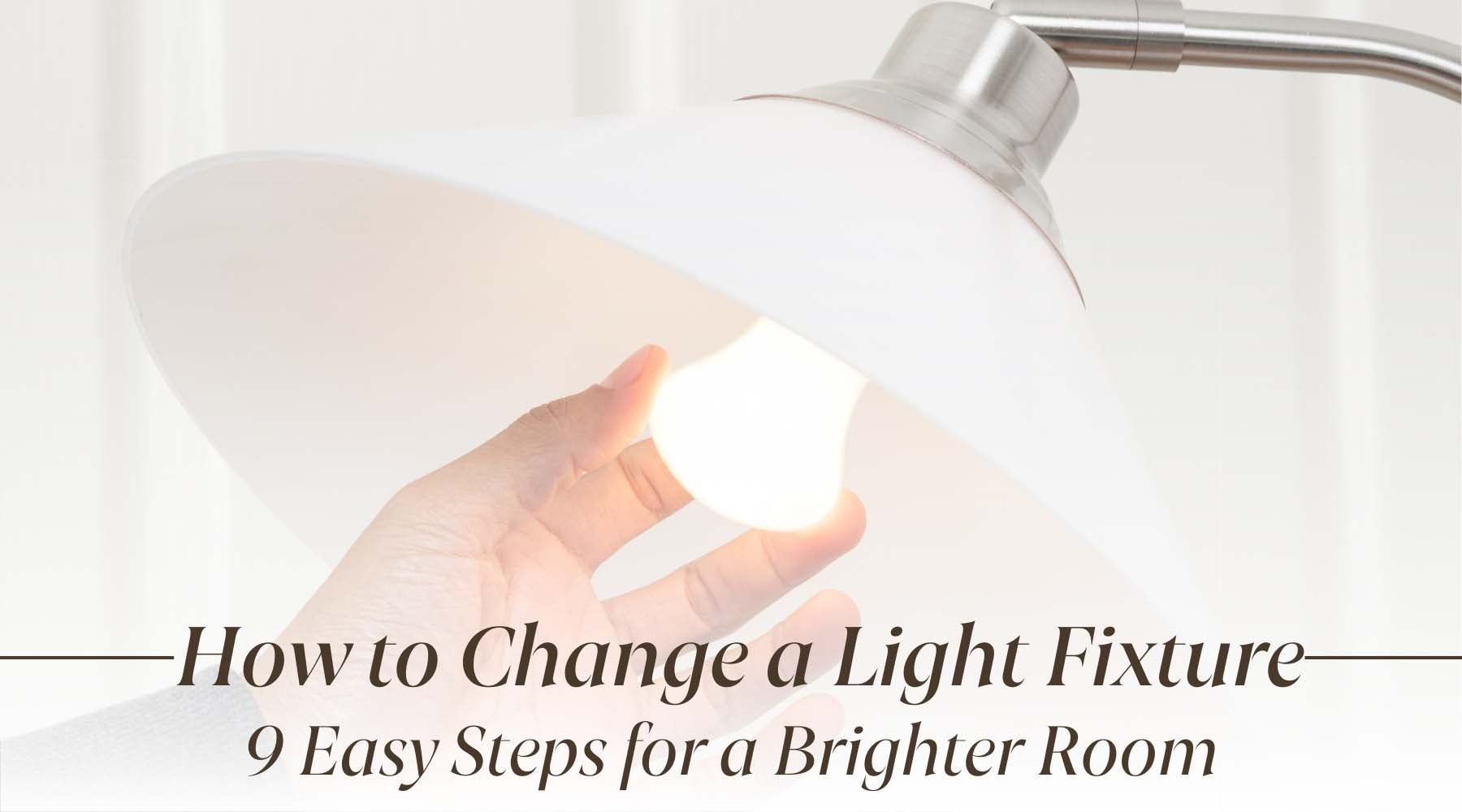Gifting has never been easier
Perfect if you're short on time or are unable to deliver your gift yourself. Enter your message and select when to send it.

Cart
Your cart is empty
In this guide, we’ll walk you through everything you need to know about types of wall sconces, styles, bulbs, and shade options, along with tips for choosing the perfect one and maintaining it.
Choosing the right wall sconce can transform your space, but with so many types of sconces and styles, it can be overwhelming. That’s why Rowabi created this comprehensive guide to help you navigate the world of wall sconces like a pro.
Wall sconces provide versatile lighting for different spaces. They can add elegance, improve light distribution, or enhance ambiance. Choosing the right type of sconce is important for transforming your interiors and exteriors effectively.
Don’t forget to visit our wall sconce collections to explore various options and find the perfect match for your space.
Candle sconces evoke the timeless charm of traditional candle-lit fixtures, reimagined for modern interiors. These sconces often feature bulbs shaped like candle flames, mimicking the romantic glow of real candles.

Some feature ornate scrollwork, while others boast clean lines and minimalist designs. Source: Rockett St George (1)
Candle sconces are perfect for creating a cozy, intimate atmosphere without overwhelming the room with brightness.
Maximize illumination in awkward or underlit spaces with corner wall sconces, designed specifically for 90-degree angles where two walls meet.
Corner sconces are a space-saving solution that ensures every nook and cranny is well-lit.
Floodlights are the go-to choice for outdoor illumination, providing powerful, wide-ranging light.
Their robust brightness ensures safety and visibility in outdoor areas, making them a staple for functional exterior lighting.
For a streamlined and modern look, flush-mounted or half-moon sconces hug the wall, offering subtle illumination.

Their design is especially effective in narrow spaces. Source: Clearhalo (2)
Their unobtrusive profile is perfect for creating ambient lighting in tight or narrow spaces.
Inspired by vintage oil lamps, lantern sconces bring timeless elegance and charm.
Lantern sconces seamlessly blend functionality and decorative appeal, both indoors and out.
Built to withstand the elements, outdoor sconces are a durable and stylish lighting solution.

Outdoor wall sconces should be made of cleanable materials to facilitate easy maintenance and cleaning. Source: LEDmyplace (3)
These sconces ensure your outdoor spaces are well-lit and visually inviting, regardless of the weather.
Highlight your favorite artwork or wall-mounted decor with picture lights, a specialized type of sconce.
Picture lights are a subtle yet effective way to spotlight your most cherished pieces.
Recessed sconces offer understated elegance, seamlessly integrating into walls for a clean, modern aesthetic.
These sconces are ideal for spaces where floor area or wall projection is limited.
Perfect for commercial or decorative use, sign lights draw attention to signage and architectural details.

These sconces draw attention to business names and logos. Source: Sign Lights (4)
Sign lights ensure your business or statement pieces are always in the spotlight.
For flexibility and convenience, swing arm sconces are unmatched.
Their versatility makes them a popular choice for multipurpose spaces.
A classic choice, single-bulb shaded sconces suit virtually any room or style.

These sconces provide effective ambient lighting. Source: Amazon (5)
These sconces are a go-to option for effective and elegant lighting.
Directional sconces let you focus light precisely where you need it.
These sconces add a dynamic touch to your lighting design.
Need more illumination? Multi-light sconces offer the brightness of multiple bulbs in a single fixture.

When mounted on walls, they can complement a central chandelier. Source: Focal Décor (6)
These sconces are an excellent choice for large spaces or layered lighting.
Wallchieres combine the sophistication of floor torches with the practicality of wall-mounted fixtures.
Wallchieres elevate any space with their decorative appeal and ambient glow.
Need inspiration? Check out our creative bedroom wall sconce ideas, or explore unique kitchen wall sconce ideas to illuminate your cooking space beautifully!
The three primary bulb types to consider are incandescent bulbs, LED bulbs, and fluorescent bulbs. Each brings unique benefits and considerations to the table.
These classic bulbs create light by heating a filament until it glows, emitting a warm and cozy illumination with excellent color rendering.

Incandescent bulbs, being an older technology, have significant limitations in energy efficiency. Source: Rockett St George (7)
Advantages:
Disadvantages:
Best Use: Perfect for living rooms, bedrooms, or other spaces where ambiance takes precedence over energy efficiency.
LED (light emitting diode) bulbs are the champions of energy efficiency and longevity, offering a variety of color temperatures and styles, including dimmable options.

LED lights are often integrated into modern wall sconce designs. Source: Amazon (8)
Advantages:
Disadvantages:
Best Use: Ideal for all wall sconce styles, both indoors and outdoors, especially in areas where energy efficiency and durability are priorities.
Fluorescent bulbs use an electric current to excite gas, creating ultraviolet light that stimulates a phosphor coating to produce visible light.

Fluorescent bulbs are commonly used in restaurant and hotel settings. Source: Kosilight (9)
Advantages:
Disadvantages:
Best Use: Typically used in commercial spaces or for task lighting where brightness is essential, though less common for decorative sconces due to their harsher light quality.
Wall sconces come in a range of styles, each offering unique characteristics that reflect specific design preferences and decor trends.
Contemporary wall sconces focus on clean lines, simple shapes, and modern materials like chrome and matte black. They are ideal for creating a sleek, minimalist look in modern homes or offices.
Best for: Minimalist or modern interiors.
Tip: Opt for integrated LED models for energy efficiency and a streamlined appearance.

You'll discover countless unique yet simple and elegant shapes when looking for contemporary wall sconces. Source: Thehouselights (10)
Transitional sconces blend modern and traditional styles, making them versatile and timeless. They feature classic shapes with modern finishes, ideal for homes that mix decor styles.
Best for: Homes with a mix of modern and classic elements.
Tip: Choose neutral tones like bronze or nickel for flexibility across different decor themes.

Transitional wall sconces typically feature clean lines, soft curves, and a balanced silhouette. Source: Urban Ambiance (11)
Traditional sconces are detailed, often featuring ornate designs and luxurious materials like brass or crystal. They evoke a classic, elegant feel and are perfect for formal spaces.
Best for: Vintage-inspired or formal rooms.
Tip: Use vintage-style bulbs to enhance their antique charm.
Rustic sconces use natural materials like wood and wrought iron for a warm, earthy feel. These are great for cabins, farmhouse decor, or spaces with a cozy, natural aesthetic.
Best for: Farmhouse or nature-inspired interiors.
Tip: Pair with Edison bulbs and warm lighting to enhance the rustic ambiance.

Rustic wall sconces typically feature materials like wood, wrought iron, and aged metals. Source: Etsy (12)
Craftsman sconces emphasize handcrafted details and natural materials, with clean lines and sturdy designs. They suit homes that value simplicity and craftsmanship.
Best for: Homes with a focus on natural, handmade decor.
Tip: Look for amber glass or wood accents to highlight the craftsman style.
Industrial sconces feature raw, unfinished materials like steel and exposed bulbs. They offer a bold, mechanical look perfect for urban lofts or modern industrial designs.
Best for: Edgy, urban spaces.
Tip: Use exposed Edison bulbs to enhance the industrial, factory-inspired vibe.

Industrial sconces often feature materials like metal, exposed bulbs, and concrete. Source: Millerlights (13)
When selecting a wall sconce, deciding the direction in which the light will cast is essential for both functionality and ambiance. Wall sconces can be designed to direct light upward, downward, or in all directions, depending on the style and desired effect.

The direction of the light from a fixture serves different purposes. Source: Upward Lighting (14)
Up-lighting sconces direct light towards the ceiling, creating a soft, ambient glow that reflects off the upper surfaces. This design can make a room appear larger by emphasizing vertical space and enhancing the room's overall brightness without harsh direct lighting.
Up-lighting is often seen in traditional and decorative sconces. These sconces are ideal for creating a relaxing, open atmosphere in living rooms, hallways, or entryways.
Down-lighting sconces cast light downward, providing a more focused and direct source of illumination. This is ideal for task lighting or for creating a cozy, intimate feel in smaller spaces.
Down-lighting is particularly useful in areas like kitchens, bathrooms, and reading nooks where concentrated light is necessary for functional tasks.
Sconces designed for all-around lighting distribute light evenly across a room, illuminating in multiple directions rather than focusing on a single area. This type of lighting provides balanced ambient light, making it perfect for hallways, larger rooms, or areas where even illumination is required.
All-around lighting sconces often feature open shades or glass designs that allow light to radiate outward, offering broad coverage. These fixtures are ideal for spaces where you want to avoid harsh shadows or need to brighten a larger area.
Wall sconce shades are essential elements that shape the lighting effect and the overall style of the fixture. Here’s a comprehensive guide to three popular shade types: cylindrical, curved, and directional shades.
Cylindrical shades are tall, narrow shades that are often used in both indoor and outdoor settings. They are commonly seen in bathrooms, hallways, or by mirrors where balanced and flattering lighting is needed.

The shape of cylindrical shades allows for even light distribution. Source: Homary (15)
Cylindrical shades can vary in materials and designs, including frosted glass for a subtle glow, or clear glass with etching or bubble effects for added texture and visual interest.
Curved shades are wider and more decorative, making them excellent focal points in a room. They spread light outward but also reflect it back onto the wall, creating a glowing effect that enhances the overall atmosphere.

The smooth lines of curved shades create a sophisticated look. Source: Lights.co.uk (16)
These shades are often used in more artistic or eclectic spaces where the light fixture serves as both a functional and decorative piece.
Directional shades are designed to focus light in a specific area, making them ideal for task lighting or highlighting particular features in a room.
These shades often have adjustable arms or a longer reach, allowing you to direct the light where it's needed most—such as illuminating artwork, architectural features, or reading areas.

Many directional shades are adjustable, allowing users to change the angle of the light. Source: Loomlight (17)
When purchasing wall sconces, it's essential to evaluate several factors, including style, room placement, size, materials, and installation ease.
The style of your wall sconces should complement the overall design of your space. A key tip is to match sconces with the existing fixtures, such as chandeliers, pendants, or even furniture finishes, without being overly "matchy."

Sconces come in a variety of styles and designs. Source: Love and Specs (18)
For instance, sleek, metal sconces fit well in modern or industrial settings, while ornate sconces with decorative detailing suit vintage or traditional interiors. Consider choosing sconces that either accentuate a design feature or provide a subtle contrast to add depth and interest to the room.
Proper placement of wall sconces is critical in determining their effectiveness. For spaces like hallways, bathrooms, or living areas, ensure the sconces fit both physically and stylistically. If placed too high, the light may not reach the intended area, and if too low, it can be visually jarring. The details have been discussed above.
And if you’re unsure about how to proper wall sconce placement, check out our guide for tips on getting it just right
Before purchasing, carefully measure the space where you plan to install the sconces. Size matters as sconces that are too large may overwhelm a small area, while those that are too small could get lost in a large room.

Choose sconces that are proportionate to the wall and the surrounding furniture. Source: Bees Lighting (19)
Take time to check the dimensions provided by manufacturers, especially when buying online, and ensure that your chosen sconces don’t crowd the wall or adjacent furniture. The number of sconces required also depends on the room size and lighting needs.
Brass, iron, and wood offer a timeless and sturdy feel, making them popular for various decor styles. For a luxe or modern look, glass or metal sconces can provide a sleek finish, while fabric shades add a softer touch.
The choice of material is important for outdoor sconces, which need to endure weather conditions like moisture, wind, and temperature changes. Durable materials such as treated metals and weatherproof finishes are ideal. For indoor sconces, particularly in high-traffic areas, opt for easy-to-clean materials like glass or metal to save time on maintenance.
Ease of installation can make or break your wall sconce experience. Hardwired sconces typically require professional installation as they need to be connected to your home’s electrical wiring. For those planning a DIY installation, consider knowing how to install a plug-in sconce, which is easier to mount and doesn’t require electrical work.
Look for fixtures that come with clear installation instructions, and check customer reviews for insights on any installation difficulties. Additionally, it's a good idea to evaluate whether the installation process fits your schedule and skill level, as more complex designs may require extra tools or expertise.
Looking for guidance? Discover how to install a wall sconce with our detailed instructions. If you're interested in a simpler solution, we also provide a guide on how to install wall sconces without wiring, ensuring you can easily achieve the perfect lighting.
Selecting the right wall sconces for your home involves more than simply picking a design you like.
Below are three important tips to ensure you make the best choice when purchasing wall sconces.
Your wall sconces should harmonize with the existing décor of your space. It can be tempting to choose the first set of sconces that catch your eye, but if they clash with other design elements in your room, you may end up with a mismatched aesthetic.
To avoid this, consider the materials, colors, and finishes of your current fixtures, furniture, and accessories.
When choosing wall sconces, think about what you want them to achieve. Are they meant to provide task lighting for activities such as reading, or are they meant to create ambient lighting for a cozy atmosphere? The function of the light will help you narrow down your options and select sconces that serve their intended purpose.
For task lighting, such as reading in a bedroom or providing light above a bathroom mirror, sconces with adjustable arms or directional lighting are ideal. If you’re using sconces to add ambiance to a room, softer, diffused light sources may be more appropriate.
Wall sconces are often chosen for their ability to add a decorative touch to a room while taking up less space than floor or table lamps. However, improper installation or poor placement can defeat their purpose. Ensure that the sconces are installed in a way that enhances the room’s layout and lighting needs.
For example, avoid placing sconces in spots where they cast awkward shadows or fail to illuminate the desired area effectively. Installing sconces too high can make the light ineffective, while placing them too low might cause discomfort by shining directly into people’s eyes.
A good practice is to mark the future position of the sconces with painter's tape before installing them. This helps you visualize their placement in the room and ensures that they will create the intended effect.
To help you further with installation, check out our guide on the cost to install wall sconces for an in-depth look at pricing and considerations.
Following these guidelines will help extend the lifespan of your wall sconces while keeping them looking and functioning at their best:
How to choose a wall sconce?
What type of wall sconce gives the most light?
Are wall sconces dated?
What is the difference between a wall light and a sconce?
What size should a wall sconce be?
Do you need an electrician to install a wall sconce?
Should sconce lights point up or down?
Do sconces and chandeliers have to match?
How far should a wall sconce be from a picture?
What is the rule of thumb for sconces?
Where is the best place to put sconces?
How do I choose wall sconces for my living room?
Are wall sconces bright enough?
Where should I use wall lighting?
How many wall lights do I need?
What types of wall lights are there?
What if I don't have a wall box where I want a wall light?
How do I coordinate wall lights with the rest of my room design?
To sum up, when choosing the perfect wall sconce, consider factors such as style, size, material, and intended function to ensure it complements your decor and meets your lighting needs. Proper installation and care will maximize their effectiveness and longevity, making them a valuable addition to your home.
Source of image:

How to Install Recessed Lighting?
If you’re fed up with outdated lighting that just doesn’t cut it anymore, recessed lighting might be your solution. It’s efficient, stylish, and can significantly improve the look of any room. This...
Read more
How to Change a Light Fixture | 9 Easy Steps
Learning how to change a light fixture is one of the easiest ways to transform a room instantly. Whether you're replacing a dated fixture or adding a new statement piece, updating your lighting can...
Read moreGifting has never been easier
Perfect if you're short on time or are unable to deliver your gift yourself. Enter your message and select when to send it.
